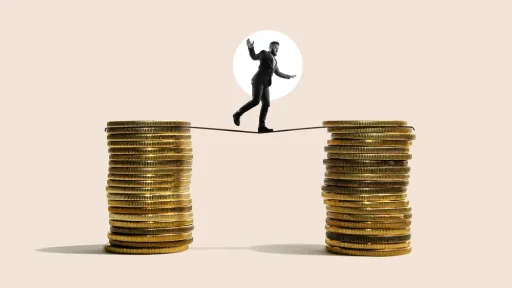The Monty Hall problem explained is more than just a mathematical curiosity; it holds significant lessons for decision-making and probability assessment vital in today’s financial landscape. Understanding this counterintuitive probability puzzle can sharpen your analytical thinking, enhancing strategies in investing, risk management, and other fields where choices impact outcomes. In this article, we’ll break down the Monty Hall problem explained clearly and thoroughly, illustrating why it remains relevant and important.
Monty Hall Problem Explained: What Is It?
The Monty Hall problem is a probability puzzle named after the host of the television game show “Let’s Make a Deal.” It involves three doors: behind one door is a valuable prize (like a car), and behind the other two are goats. The contestant picks a door, then the host, who knows what’s behind the doors, opens one of the remaining doors revealing a goat. The contestant now must decide whether to stick with their original choice or switch to the other unopened door.
At first glance, it seems there’s an equal chance whether you switch or stay—50/50. However, the Monty Hall problem explained reveals that switching doors actually doubles the probability of winning from 1/3 to 2/3. This counterintuitive insight has baffled many but can be understood with a closer look.
How the Monty Hall Problem Explained Makes Sense
Let’s consider the probabilities step-by-step:
- Initial Choice: You pick one door out of three, so there’s a 1/3 chance you picked the prize and a 2/3 chance you didn’t.
- Host’s Action: The host opens a door revealing a goat, which he can always do because he knows where the prize is.
- If You Stick: Your probability of winning remains 1/3, because nothing about your original pick changed.
- If You Switch: You win if your original choice was wrong, which has a 2/3 probability.
Therefore, switching doors actually gives you a better chance of winning.
Why the Monty Hall Problem Explained Matters in Finance
Although it originated as a game show puzzle, the Monty Hall problem explained carries profound implications for decision-making under uncertainty, key in finance and investing:
- Risk Evaluation: Sometimes intuition can mislead in assessing probabilities, as with the Monty Hall problem. Recognizing when to re-evaluate choices based on new information can improve outcomes.
- Investment Choices: Like switching doors, changing an investment decision after new information might increase your chances of success.
- Behavioral Biases: The problem helps demonstrate cognitive biases such as status quo bias—people’s preference to stick with their initial choice even when it’s suboptimal.
In an era dominated by data, understanding such probability puzzles enhances financial literacy and decision-making acumen.
A Simple Simulation to Grasp the Monty Hall Problem Explained
Try this method to see how switching creates an advantage:
- Imagine 100 doors, with 1 prize behind a random door and 99 goats behind all others.
- You pick one door.
- The host opens 98 doors revealing goats.
- You have a choice to stick with your door or switch to the remaining closed door.
By switching, you have a 99/100 chance of winning, illustrating the power of the Monty Hall problem explained in larger scale.
Common Misconceptions About the Monty Hall Problem Explained
- Equal Chance After One Door Is Opened: Many think the odds reset to 50/50 once a door is opened, but this ignores initial probabilities and the host’s role.
- Host’s Randomness: The host must always open a goat door. If the host opens doors randomly or offers no valuable information, the probabilities shift.
- Switching Doesn’t Matter: Switching is a better strategy due to the initial low probability of picking the prize.
Lessons Beyond the Game
The Monty Hall problem explained invites us to be skeptical of intuition and careful with how information and probability interact. For professionals managing investments or making strategic decisions, this puzzle serves as a reminder to analyze data critically and recognize biases.
In conclusion, the Monty Hall problem explained is a compelling example of how human intuition about probability often fails but can be enhanced by clear reasoning and empirical testing. By embracing such insights, individuals and businesses can improve decision-making frameworks, crucial to navigating the complexities of today’s financial world.


